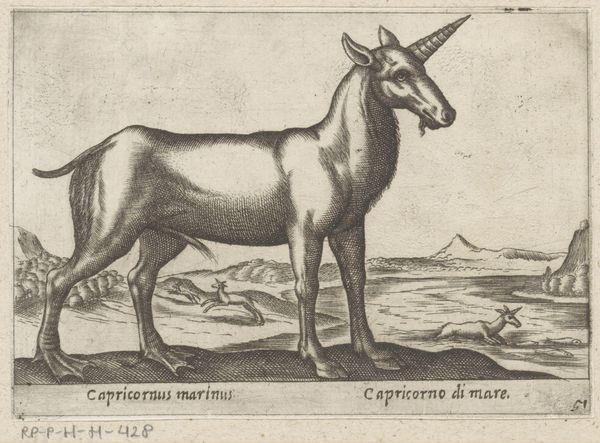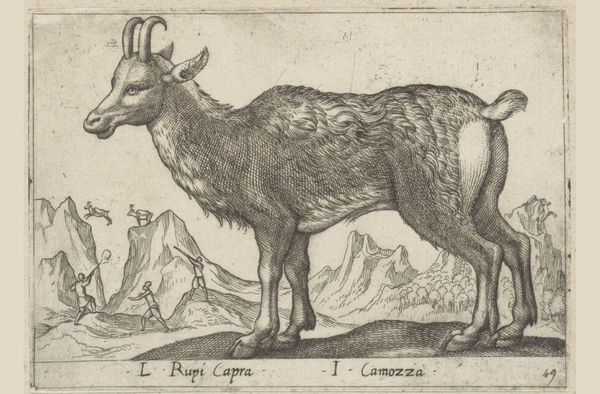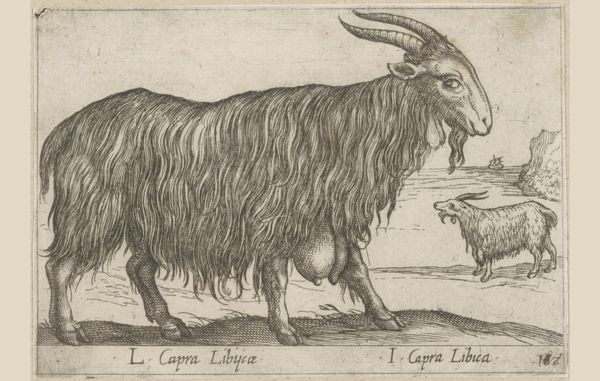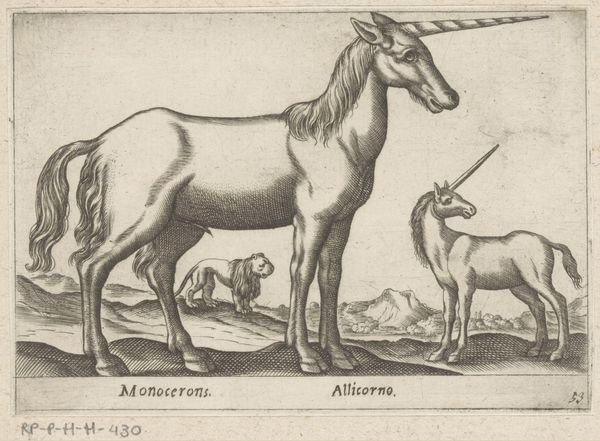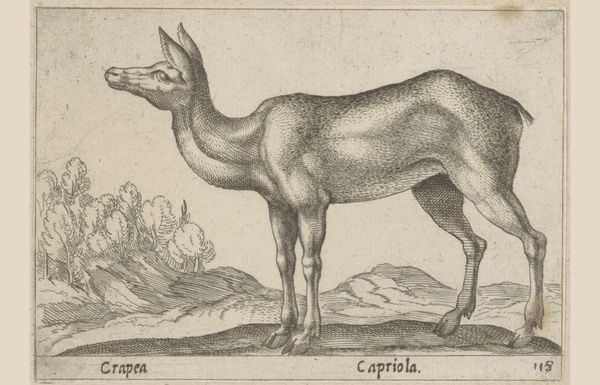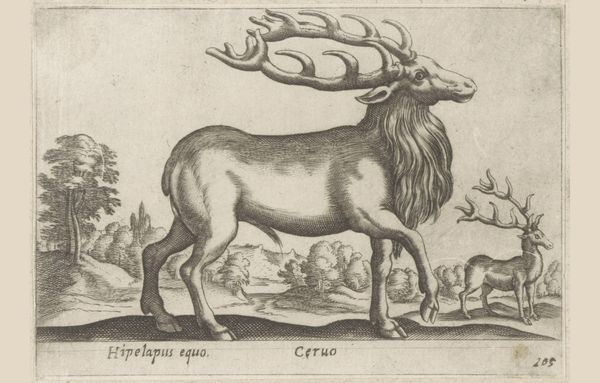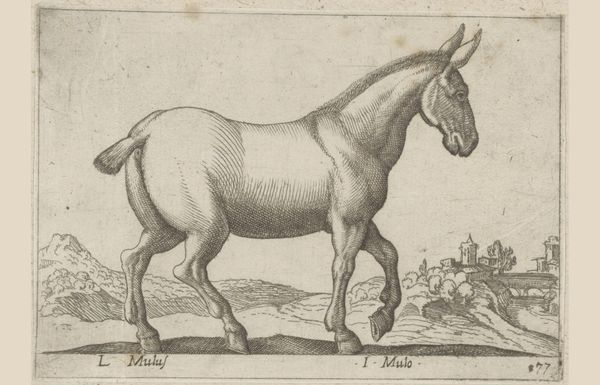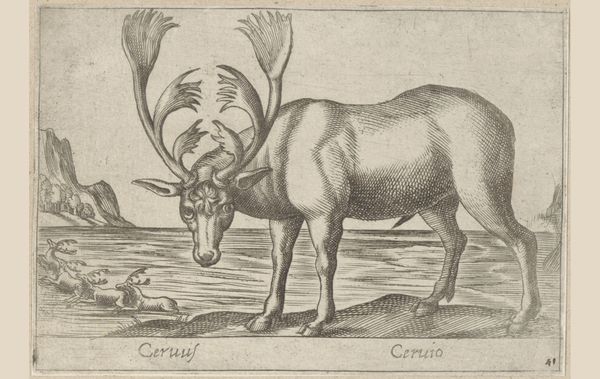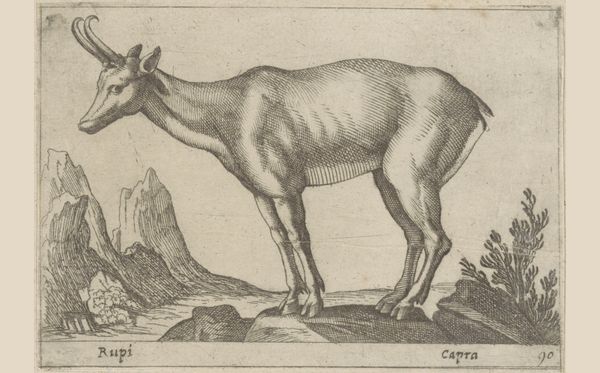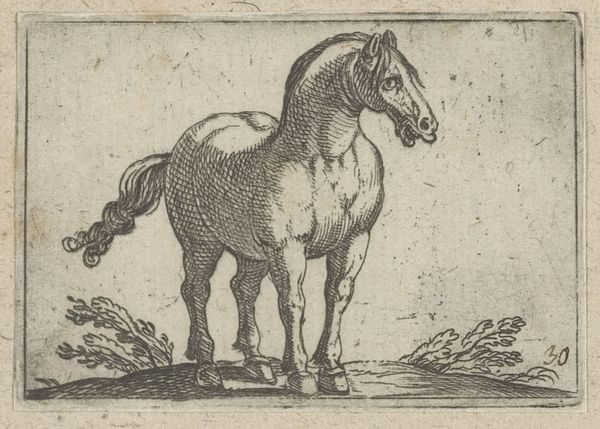
etching
#
baroque
#
etching
#
landscape
#
caricature
#
figuration
Dimensions: height 95 mm, width 137 mm
Copyright: Rijks Museum: Open Domain
Curator: Good morning. Today we are looking at "Geiten," or "Goats," an etching dating to before 1650. It can be found here at the Rijksmuseum. The artist is Antonio Tempesta. What are your initial thoughts? Editor: I’m struck by how unsettling these goats are. It’s the proportions, the heavy lines of the etching giving them a hulking presence, and their bizarrely humanized faces that makes them slightly disturbing to behold. Curator: Disturbance isn't unintentional. Consider how the two species, Goat and Lion, meet in the strange composite. It’s less about pure zoological depiction and more a symbolic expression of hybridity, exploring themes of wildness and domesticity. The artist seems very playful in ascribing qualities of the fearsome lion onto gentle goats, in essence pointing to something we might describe in humans as perhaps gentle strength? Editor: That may be the intent, but look at the etching more closely. Notice the careful rendering of textures, the cross-hatching building depth and volume. I keep returning to how the light falls—see, on the back of the goat on the left, emphasizing its lean build? It makes them feel more physically present than allegorical. The meticulous line work suggests an emphasis on observable reality. Curator: The composition certainly supports the observation: two named and labeled species set within a grounded landscape – an approach resonant of early scientific illustration. However, in this period, artists were often tasked with allegorical or symbolic portrayals. The hybrid is a strong clue toward deeper meanings rooted in cultural association rather than pure naturalism. Consider what happens if we invert the composite: meek lions instead of lions with caprine characteristics, or a blending of qualities within the self. Editor: Perhaps, but let's not overlook the tension between detail and exaggeration. Note the muscles and overall anatomy rendered with great skill; the human faces of the two, not so much. This, it seems to me, underscores a commentary about what's considered ideal form. The contrast almost suggests an exercise in manipulating form itself and what we value aesthetically. Curator: A very astute observation of aesthetics. Thanks to Tempesta, the image is loaded with so many dual meanings and purposes, it becomes a rich reflection of its time. Editor: Agreed. Seeing how art, science and cultural projection intersect in such fascinating ways truly transforms our reading of history.
Comments
No comments
Be the first to comment and join the conversation on the ultimate creative platform.
